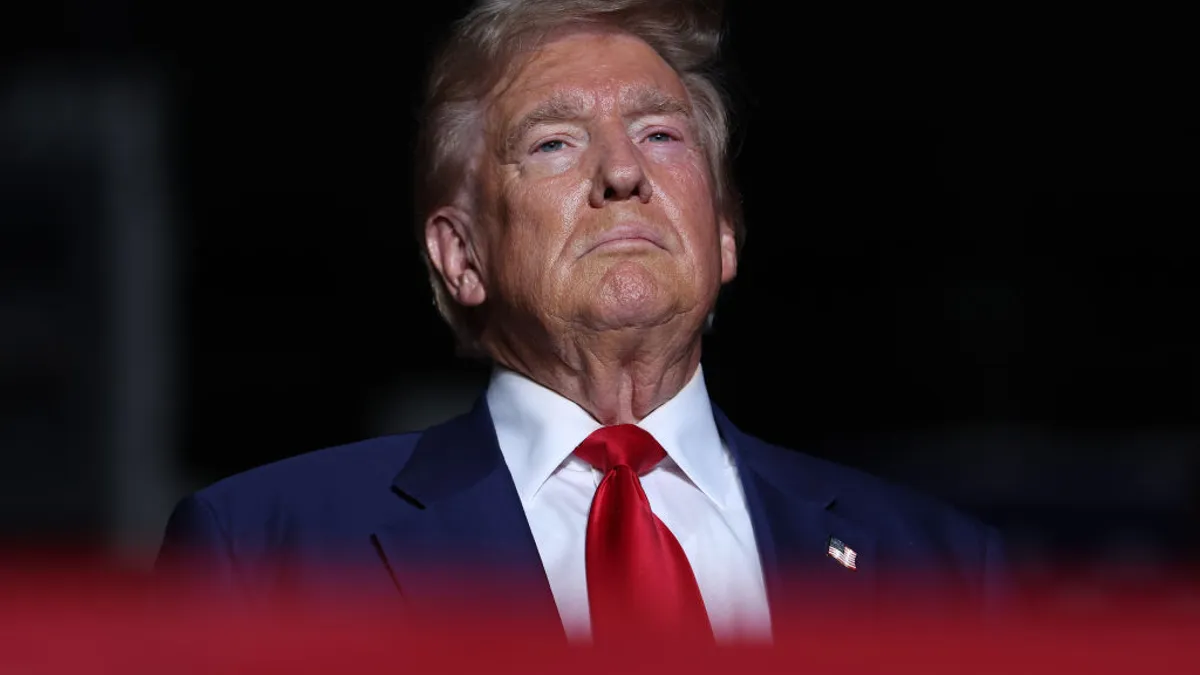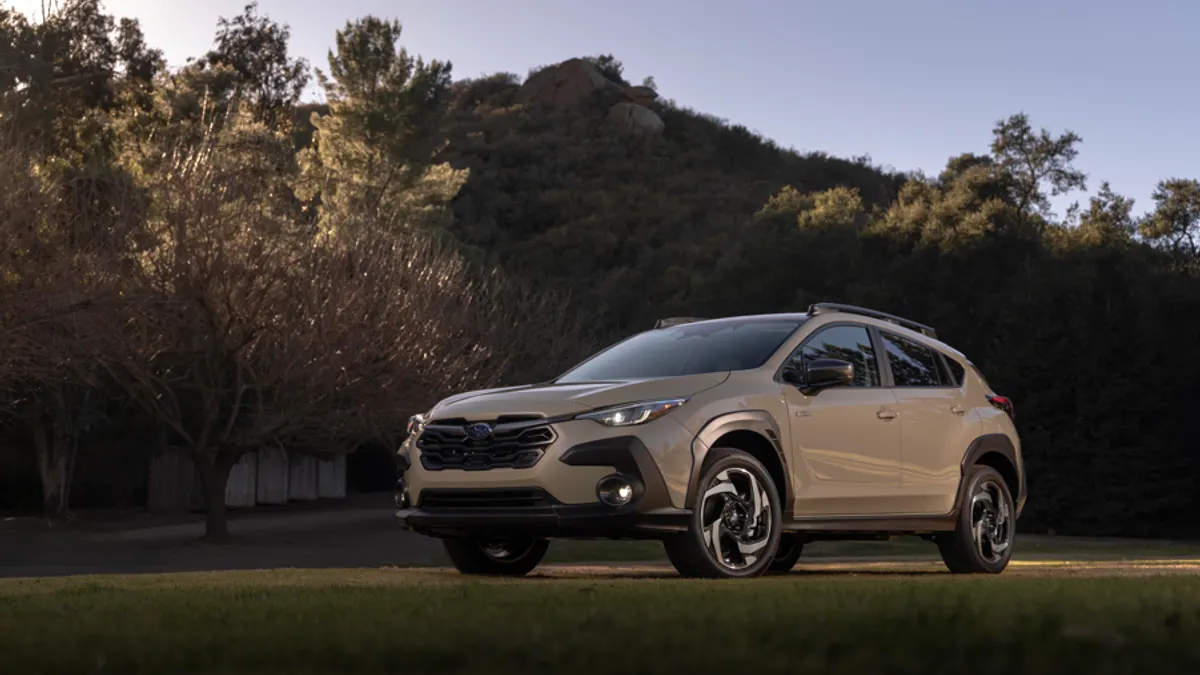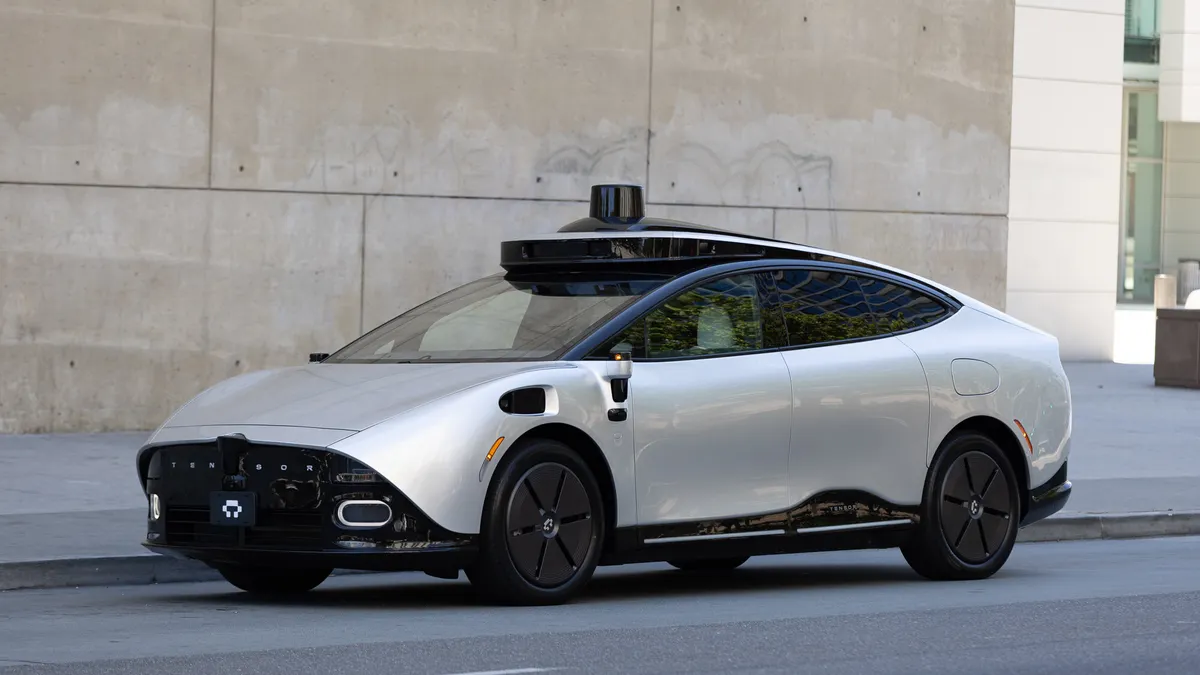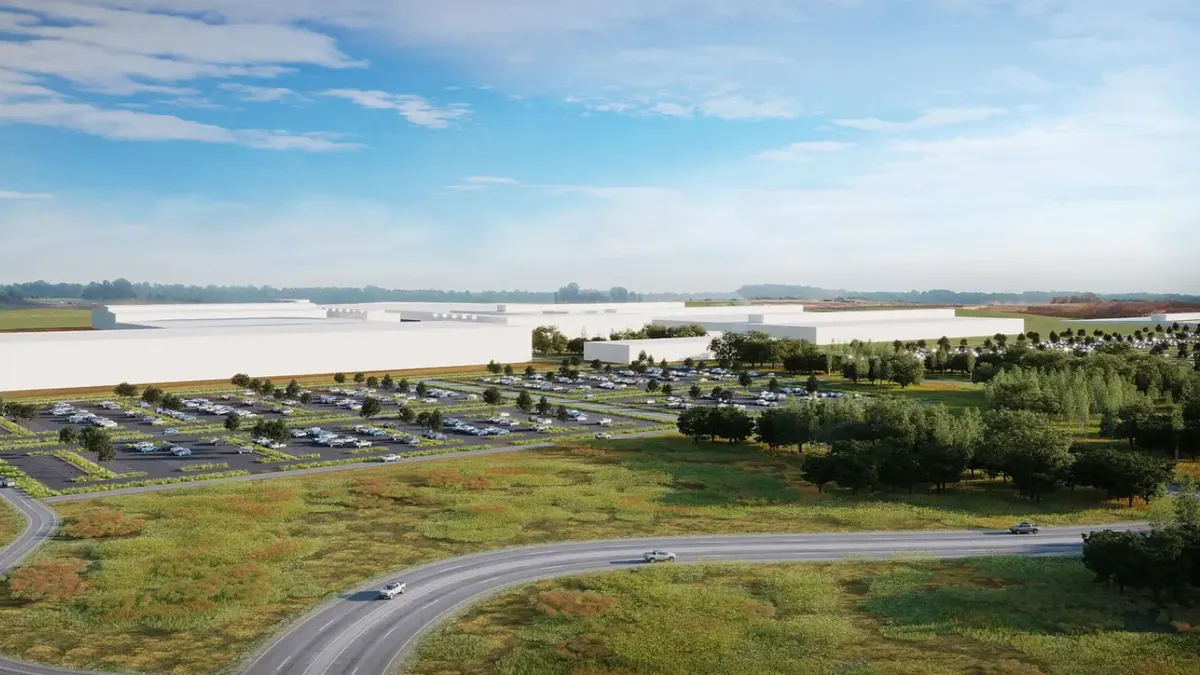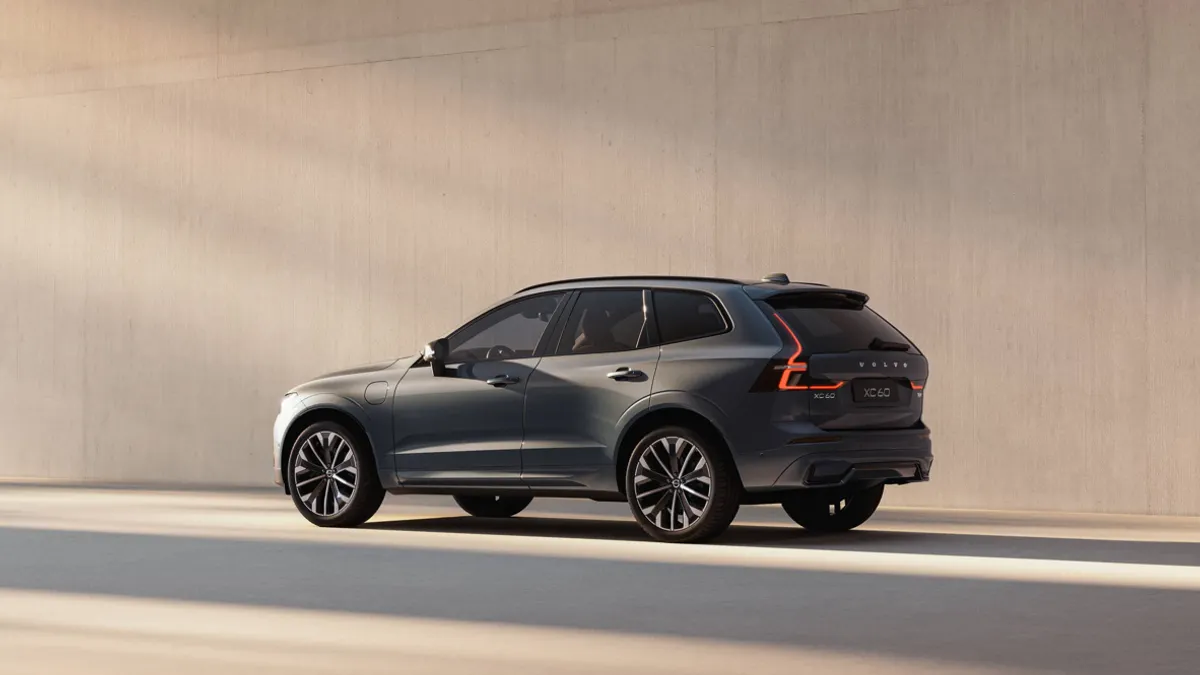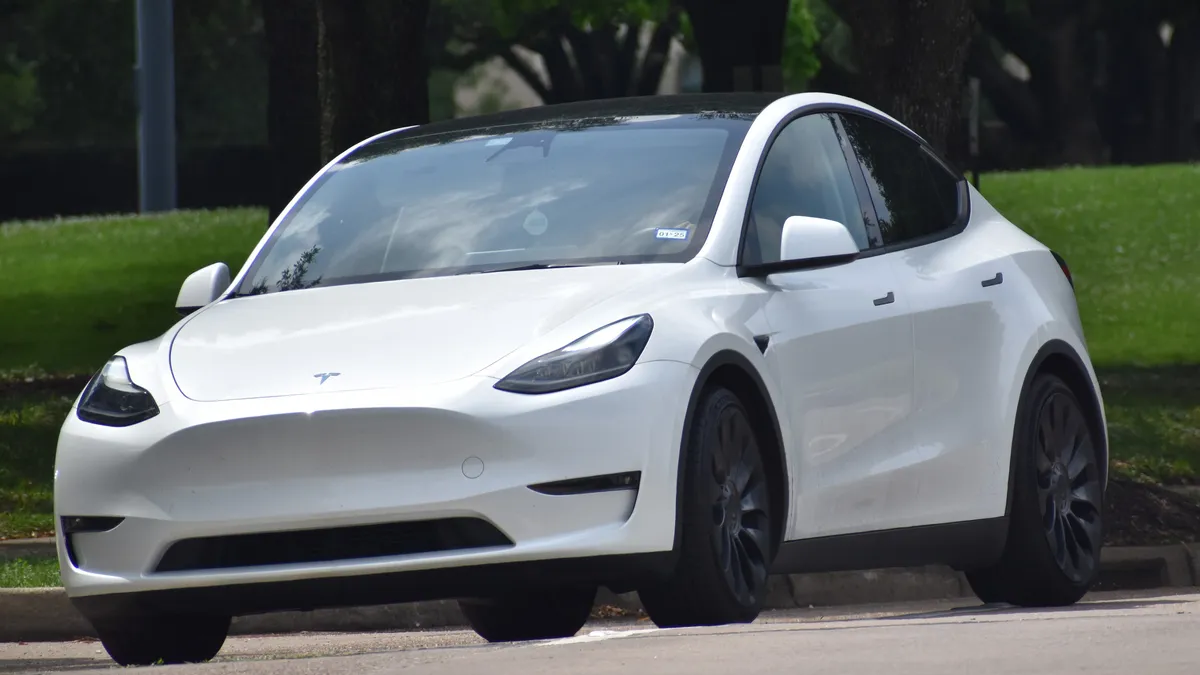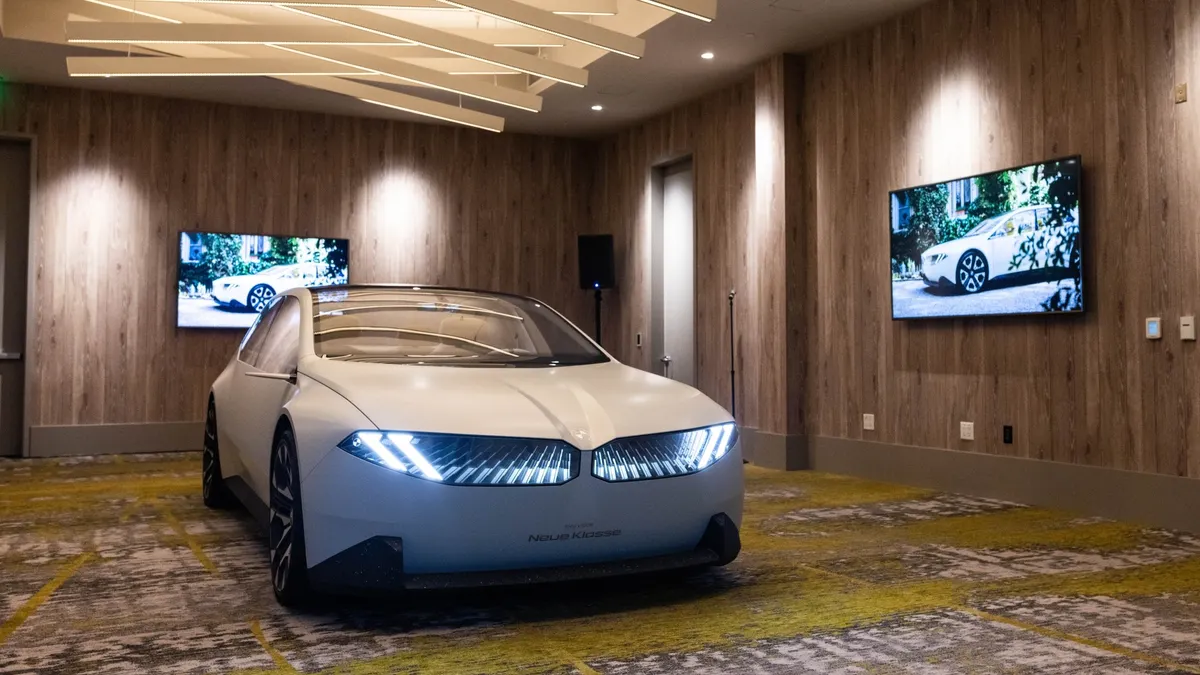Automotive industry stakeholders are facing regulatory uncertainty as they prepare for policies to change significantly after President-elect Donald Trump takes office on Jan. 20.
The incoming administration aims to tackle a wide agenda relevant to automakers, experts told Automotive Dive, including changes to policy surrounding global trade, emissions and vehicle standards. However, experts also noted the incoming president will face several obstacles.
Read on to learn more about some of the key topics for automakers to watch in the second Trump administration — and what industry stakeholders are expecting.
1. Tariffs
Trump has repeatedly said he would increase tariffs on foreign goods.
As a presidential candidate, Trump floated several proposals, including a 10-20% universal tariff, as well as more specific tariffs of 60% on goods originating from China, and 200% on vehicles made in Mexico. Since his election, the president has also promised to impose a 25% tariff on goods from Canada and Mexico and an “additional” 10% tariff on China-made goods. Trump’s transition team has also proposed a global tariff on battery materials and plans to negotiate specific exemptions with U.S. allies, Reuters reported in December.
It’s unclear whether the latest proposals would be in addition to or instead of his earlier proposed tariffs. But the threats highlight the power presidents have to create or raise tariffs, according to a report by S&P Global Mobility.
It’s also uncertain how Trump’s proposed tariffs would affect new vehicle affordability, said Stephanie Brinley, associate director of auto intelligence at S&P Global Mobility. Selling fewer EVs in the U.S. could bring down the average transaction price, but tariffs could offset those affordability gains by making internal-combustion-engine vehicles more expensive.
“I don't think that it makes the situation a lot better,” Brinley said.
2. Trade talks with Canada, Mexico
The United States-Mexico-Canada Agreement will undergo a mandatory review in July 2026, and automotive topics will likely be on the table, according to experts.
During the review period, each country has a chance to suggest revising portions of the trade deal, if any, that would lead them to extend the USMCA for another 16 years. If the parties do not agree on extension terms within ten years of talks, the agreement would expire in 2036.
If the talks prolong and the trade deal's renewal “gets punted over and over,” it would create immense uncertainty for automakers, Everett Eissenstat, a partner at law firm Squire Patton Boggs and former deputy director of the National Economic Council and deputy assistant to the president for International Economic Affairs in the first Trump administration.
More immediately, each country's trade team will be working to firm up their negotiating position in the coming months, including through industry consultations. Trump will likely focus on Mexico's comparatively low labor rates and concerns that automakers and suppliers based in China are investing in Mexico to circumvent U.S. trade rules, per the S&P Global Mobility report.
In addition, Trump could use targeted tariffs as a negotiating tool, “particularly as President-elect Trump favors bilateral rather than multilateral trade agreements,” Katie Hilferty and Casey Weaver, two trade attorneys at the law firm of Morgan Lewis, said in an email.
“It would not be surprising for President-elect Trump to withhold renewal of the agreement to encourage the Mexican government to agree to stronger controls on these exports,” Hilferty and Weaver added. “He may also suggest engagement of a bilateral trade agreement with Canada to compel Mexico to agree to some of his suggested amendments to the USMCA in order for Mexico to remain in the trilateral agreement.”
3. Fuel economy and vehicle emissions standards
The incoming Trump administration plans to make it easier for automakers to comply with federal emissions and fuel economy standards for light-duty vehicles. The existing regulations, which run through 2032, make it nearly impossible for automakers to meet both standards because they are misaligned, according to S&P Global Mobility.
“Change seems necessary to realistically align regulations with what is technologically feasible, with what consumer demand is for the technology, and with what is profitable at a price point consumers are willing to pay, and to accomplish those factors within the defined timeframe,” the S&P Global Mobility report says. “The targets may be obtainable on a longer-term horizon, but meeting within the current timeframe seems unlikely.”
Aligning the federal regulations, however, could force automakers to violate California's rules. California has long secured a waiver to federal rules that allow the state to set its own vehicle emissions standards, which various other states follow.
Trump's transition team has recommended blocking California from securing that waiver, and returning to 2019 fuel economy and vehicle emissions standards nationwide, Reuters reported based on documents it reviewed.
But any attempt to revoke California's waiver would lead to lawsuits and litigations, and it's unclear whether the waiver would remain in effect while the matter worked its way through the courts, said Levi McAllister, partner and head of the EV working group at law firm Morgan Lewis.
4. EV tax credits
Trump’s transition team recommended lowering funding for several programs intended to support EV sales, according to Reuters.
The plan would pull back Inflation Reduction Act funds from consumer incentives and federal support for charging stations.
The White House, however, would need congressional approval to unravel the EV provisions of the IRA, McAllister said. That could prove trickier than expected, despite complete Republican control in Washington, because automakers have invested in EV manufacturing facilities in Georgia and other regions often represented by Republican lawmakers.
“It could have real political impacts on constituents in areas that are historically supportive of the administration,” McAllister said.
5. New limits on federal power
The Trump administration plans to make a number of important policy changes through rulemaking but may have more difficulty changing regulations after the U.S. Supreme Court in June ended “Chevron deference,” a longstanding legal doctrine that deferred to a federal agency’s interpretation of the legislation when the law was ambiguous.
It’s hard to know how the sweeping ruling will affect policymaking, especially specific regulations, but it could create considerable uncertainty for automakers and suppliers as challenges to federal power make their way through the legal system, Eissenstat said.
“If you want sustainability and durability, you have to legislate,” he said.



